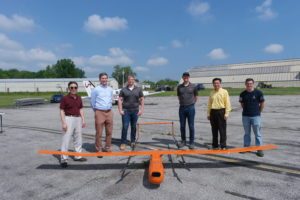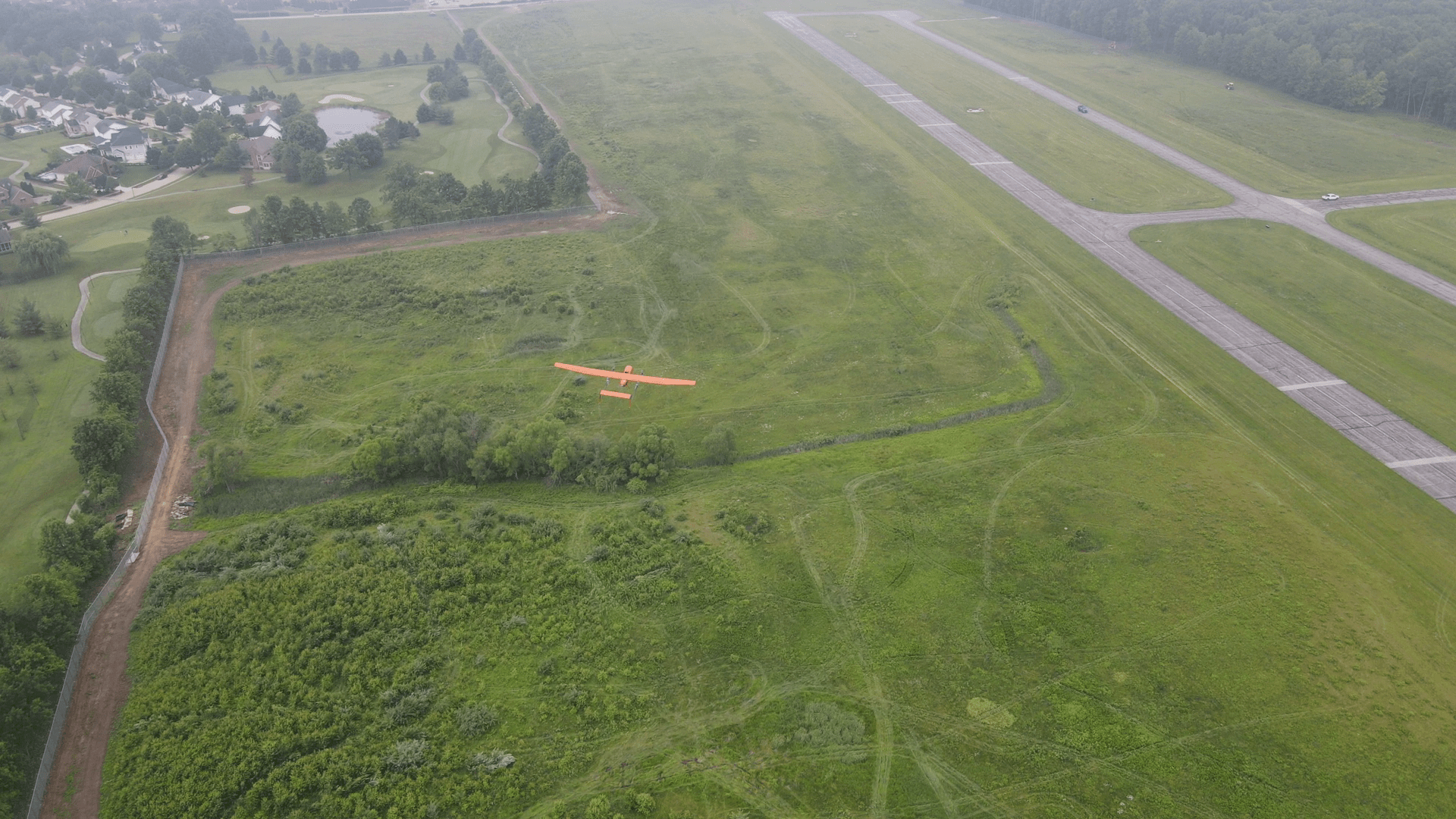
Event 38 Completes Demo Flight of Fuel Cell Powered Fixed Wing VTOL Drone
by DRONELIFE Staff Writer Ian M. Crosby
On Monday, June 13th, mapping drone manufacturer Event 38 Unmanned Systems completed a successful demo flight of the E450, a drone powered by a hydrogen fuel cell, at the Kent State University airport.
Continue reading below, or listen:
The flight was the culmination of a multi-year project, initiated in 2020 with sponsorship by the Ohio Federal Research Network (OFRN), a program managed by Parallax Advanced Research. Event 38 partnered with experts at Kent State University, Case Western Reserve University, the University of Dayton, and Wright State University to investigate the potential of fuel cells as a power source for drones.
Fuel cells have the capacity to greatly extend a drone’s flight time, as well as require far less maintenance due to fewer components. Additionally, fuel cell-powered drones are much quieter than gas-powered variants, enabling more stealthy aerial surveillance.
“This team was among the first to experiment with using fuel cells to power fixed-wing, VTOL drones,” said Event 38 founder and CEO Jeff Taylor. “At Event 38, we’ve been making drones for a decade, so we were very eager to play a role in discovering how fuel cells can shape the future of unmanned flight technology. Plus we recently completed another OFRN project where we integrated a 3D-printed antenna with the E400, our newest fixed-wing mapping drone, so we were excited to be part of another OFRN project.”

The E450, a larger E400 built to accommodate the size of the fuel cell, features a customized carbon fiber structure to house the cell and tank, as well as a custom thermal management setup to keep the fuel cell cool during flight.
“The autopilot and power system need to be more closely integrated for a fuel cell compared with a battery or gasoline engine,” said Event 38 Principal Engineer Mathew Wright, who managed integration of the fuel cell and power management systems with the E450’s flight controller and ground control station. “The power needs to be regulated in real time to optimize for changing power draw and anticipated power bursts to climb or land under VTOL.”
Following several years of work, the completed drone was taken for a demo flight at Kent State University Airport, where it flew successfully for two hours, achieving Level 7 — “system prototype demonstration in a relevant environment” — on the technology readiness level (TRL) scale. Based on an energy use analysis study conducted after the demo, Taylor believes the drone could fly for a total of 6 hours with a fully pressurized Hydrogen tank.
“In the past, there were a number of drone applications that were deemed impractical because gas and battery power weren’t sufficient due to limited range, noise, or maintenance concerns,” said Taylor. “We’re excited to see which applications we can revisit now that fuel cell power is an option. For example, while Event 38 is not focused on delivery drones, our colleagues in the industry may now be closer to making delivery drones a reality with fuel cell power. Theoretically, if someone wanted to start a drone delivery service with a fleet of Event 38 drones, they could.
“In terms of flight time, this drone is truly unmatched among its competitors,” Taylor continued. “We’re proud to have been a part of yet another project that’s setting a new standard for drone performance.”
Miriam McNabb is the Editor-in-Chief of DRONELIFE and CEO of JobForDrones, a professional drone services marketplace, and a fascinated observer of the emerging drone industry and the regulatory environment for drones. Miriam has penned over 3,000 articles focused on the commercial drone space and is an international speaker and recognized figure in the industry. Miriam has a degree from the University of Chicago and over 20 years of experience in high tech sales and marketing for new technologies.
For drone industry consulting or writing, Email Miriam.
TWITTER:@spaldingbarker
Subscribe to DroneLife here.